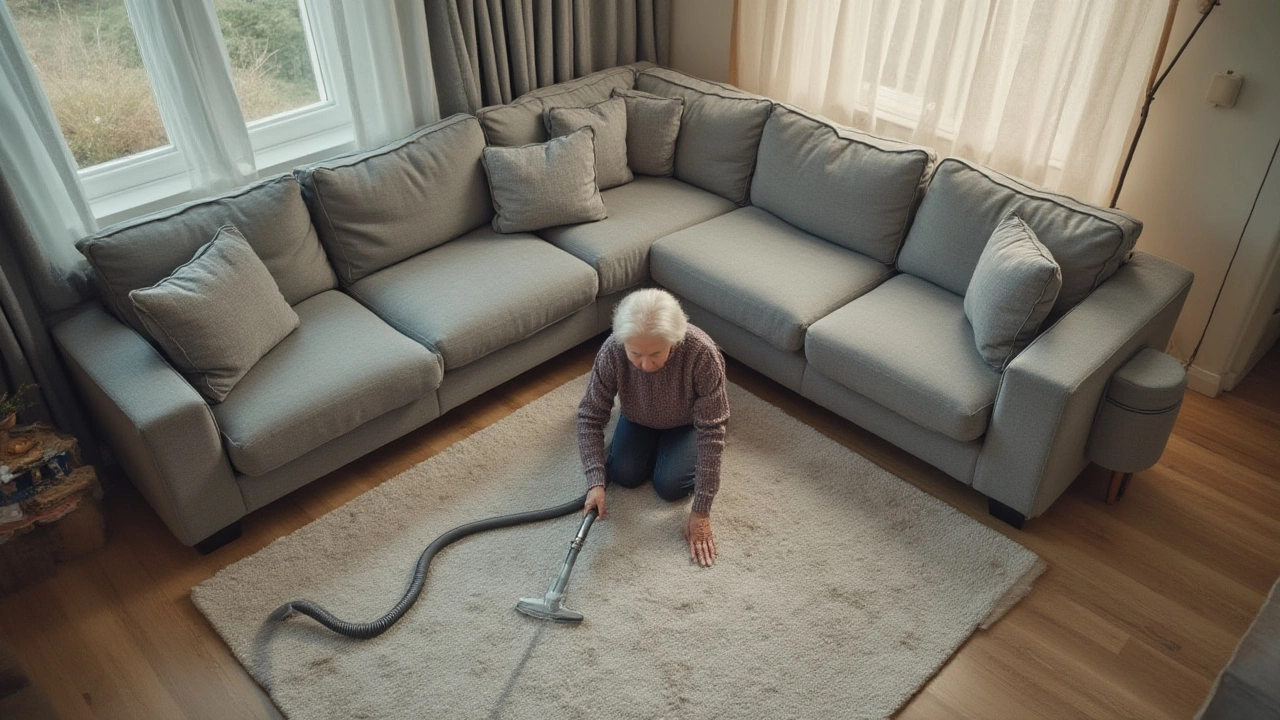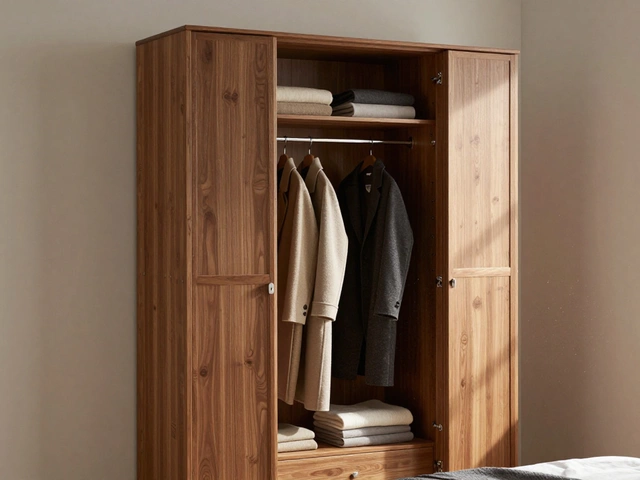That feeling when you spot a gorgeous corner sofa in a showroom, arranged just so? It’s hard to resist. They look mega comfy, and the thought of stretching out with room for the whole crew is tempting. But, as dreamy as they seem in the catalog, there’s a flipside nobody talks about at first: living with one isn’t always as cushy as those glossy pics make it seem.
Space Hogs: When Your Corner Sofa Eats the Room
The first time you try to wedge a corner sofa into a regular living room is a reality check. These things demand space—way more than you picture. Seriously, grab a tape measure before you hit the buy button. Most corner sofas are over 2.5 meters on each side. That’s nearly 8 feet—so you’re losing tons of floor real estate compared to a standard two- or three-seater. Suddenly, your cozy space feels crowded. If you don’t have an open-plan home, fitting everything in gets awkward fast.
Arranging a room around a corner sofa is often like solving a puzzle where half the pieces are missing. Most style guides show corner couches floating in huge, sunlit lofts. In the real world, you’re often forced to cram it against walls, and even then, you might block windows, radiators, or doorways. Entertaining gets trickier when guests have to shuffle around the arms just to sit down. Want a coffee table? Better hope you have enough clearance. The whole vibe can end up feeling boxed-in instead of open.
Here’s the kicker: corner sofas are technically designed to maximize seating in smaller spaces, but that only works in rooms built for them. If your space is even a bit tight, there’s little room left for side tables, lamps, or extra chairs. And forget rearranging the layout on a whim—the shape locks you in, and switching things up is a major chore. Want to float your sofa in the middle of the room? Only if you want the back on display (which usually isn’t as pretty as the front).
If you’re living in a rental or plan to move, bringing a corner sofa along is its own headache. Stairs, door frames, weird corners: getting a giant L-shaped piece through all that is... well, borderline impossible sometimes. You’ll need to check your door width, hallway clearance, and hope you’ve got nimble friends or movers. In a 2023 UK survey, 34% of corner-sofa owners said they regretted their purchase mainly because of how tough it was to fit in or move.
| Average Dimensions | Corner Sofa | 3-Seater Sofa |
|---|---|---|
| Length (side A) | 2.7m | 2.1m |
| Length (side B) | 2.2m | - |
| Depth | 1m | 98cm |
| Seat Height | 45cm | 45cm |
The Cleaning Conundrum: Dust, Crumbs, and Forgotten Socks
One thing you won’t see in sofa adverts: the giant dust bunnies that lurk under the L. Corner sofas are magnets for everything that falls between the cracks. Because of their shape, crumbs, pet hair, and lost items collect in the worst places—especially the inside corner, where the two sections meet. That spot is a black hole of household debris. Pulling out the vacuum and trying to reach back there is a workout on its own.
If you’ve got kids or pets, expect toys, socks, and snack wrappers to disappear for weeks. Once you finally move the sofa—good luck wrestling it out of the corner—you’ll probably find treasures (and smells) you forgot existed. And speaking of pets, their fur loves to tangle in the fibers, particularly in those hard-to-reach crevices. Leather or faux-leather models aren’t immune either; dust balls tend to drift and collect at the base.
Spills quickly become major dramas. If someone drops a drink near the corner, you’re dealing with stains in spots you can’t easily access without moving the whole thing. Fabrics differ, but most corner sofas still have seams or joints where liquid seeps, meaning you need serious cleaning tools or a professional service to fix accidents. Watermarks and discoloration are common nightmares, especially for light hues.
Removable covers? Handy, but a pain to take off and wash due to the shape and the size of the pieces. Not all covers are machine-washable, so always check. If you’re considering a velvet or chenille finish, bear in mind those look plush but attract every strand of hair and every bit of dust, which will show up most in direct daylight. Pro tip: go for darker fabrics, patterned designs, or tightly-woven textiles—they hide dirt a little better. But even then, no corner sofa is ever truly low-maintenance.

Moving Madness: Why Corner Sofas Are a Nightmare for Relocation
If you’ve ever tried to move house with a full-size corner sofa, you probably understand the struggle. These sofas aren’t just big—they’re weirdly shaped. Navigating stairwells and small doorways with a long, one-piece L-shape is something straight out of a sitcom gone wrong. Even the so-called “modular” corner sofas don’t always break down into small enough parts. Some have bolts and weird connectors you haven’t touched since assembly day (and probably lost the tools for, too).
Delivery teams often have to remove doors just to get them inside. A 2022 survey from a leading UK logistics company found that 22% of sofa returns were due to failed delivery: the item was simply too chunky to fit through doorways or up stairs. Unless you’ve got double doors or live on a single-level home, budget at least double the time and energy for moving day when a corner sofa is involved.
It’s not just the size—it’s the weight. A good-quality corner sofa can weigh over 100kg. Trying to lift and maneuver it without damaging walls or smashing fingers is no joke. And since most corner sofas are built to order for your chosen “hand” (i.e., left or right arm longer), you can’t easily swap sides if your next place has a different layout. You’re stuck with what you picked, unless you spring for a new one entirely.
Another thing people don’t consider: not all moving companies are game for handling big furniture. Some charge extra, or might even refuse to move certain oversized pieces, corner sofas included. Factor in the cost if you plan to relocate in the next few years, or you might just end up selling it off at a loss and replacing it for every move.
Limited Flexibility: One Trick Pony in Design and Use
A regular two- or three-seater can jump from lounge to guest room or be split up to open up floor space. But once you’ve got a corner sofa, you’re mostly locked into that setup. It works just one way—a single L-shape or U-shape—fighting you if you ever want to switch up the room. Modular designs are sold as “flexible,” but in practice, rearranging the sections can be limited by your available space, carpet marks, or other furniture. Only the most expensive, true modular options allow for any real design freedom.
Imagine throwing a party and wanting to encourage conversation: with a big corner sofa, guests end up weirdly spaced, sometimes too far apart on the L-shaped bend. You lose the coziness of people facing each other directly. And if you have more than one “main” room, your sofa’s bulk and fixed hand mean it rarely fits the new spot after a house shuffle.
For anyone who likes variety or has commitment issues with furniture, a corner sofa can feel pretty restrictive. Maybe you wanted a chaise lounge on the left, but what if you move, or just get bored of the setup? Too bad, unless you want that awkward “chaise facing the wall” look. Save yourself the trouble: if you’re the rearranging type, test-drive smaller, separate sofas or chairs instead. Mixing and matching gives mad flexibility, way more than an all-in-one corner behemoth ever could.
- Tip: Carefully map out your room in an online planner before pulling the trigger on a corner sofa. You might be surprised how little else you can fit once the big guy is in.
- Tip: For modular lovers, always ask exactly how the sections connect and whether you can switch them in future. Don’t just take the salesperson’s word for it—measure twice, and consider all your future needs.

Style vs. Substance: When Corner Sofas Don’t Suit Your Life
Corner sofas make a statement, no question. They fill a space and demand attention. But style can clash with real life, and that’s where some buyers get burned. Kids love to claim a spot in the curve, but adults may find the deep seats uncomfortable for daily use. Guests often get awkwardly wedged into the corner—great at first, but not so awesome for longer hangs. Plus, good luck squeezing in extra bodies if you entertain often. A single corner sofa doesn’t always add up to more usable seats: the “joint” where the two sides meet can end up as dead space, where nobody really sits comfortably.
And let’s be honest: fashion in furniture moves quickly. What looks “so now” today might give off that retro-not-in-a-good-way vibe in a few years. Classic two-seaters and armchairs age better and are way easier to update if you fancy new throws or want to swap up your decor. A big corner sofa is a beast to reinvent. Reupholstery is pricey and time-consuming, and finding covers in the right shape and size is a rare win.
If you like movie nights sprawled out, sure, a corner sofa is awesome. But if you crave versatile spaces—maybe yoga at home, the odd sleepover, or an occasional home office—the sofa ends up hogging square footage you could use for other stuff. Families with teens or young adults sometimes swap corner sofas for smaller, split-up seating for exactly this reason: it’s easier to evolve with life changes, not just styles.
Bonus fact: manufacturers often charge a premium for the corner design, but it’s not always better built. Check reviews for sagging areas, especially in the middle junction. And if you’re on the shorter side, many corner sofas have deep seats that some people find hard to get out of—a classic sore point in reviews from folks under 5’6”.
Choosing a sofa is a big move. They promise a laid-back, sociable vibe but can turn into high-maintenance, space-hogging centerpieces. If you’re ready for the trade-offs and your room truly fits, awesome. But know what you’re getting—because those showroom dreams turn into daily reality real fast.







